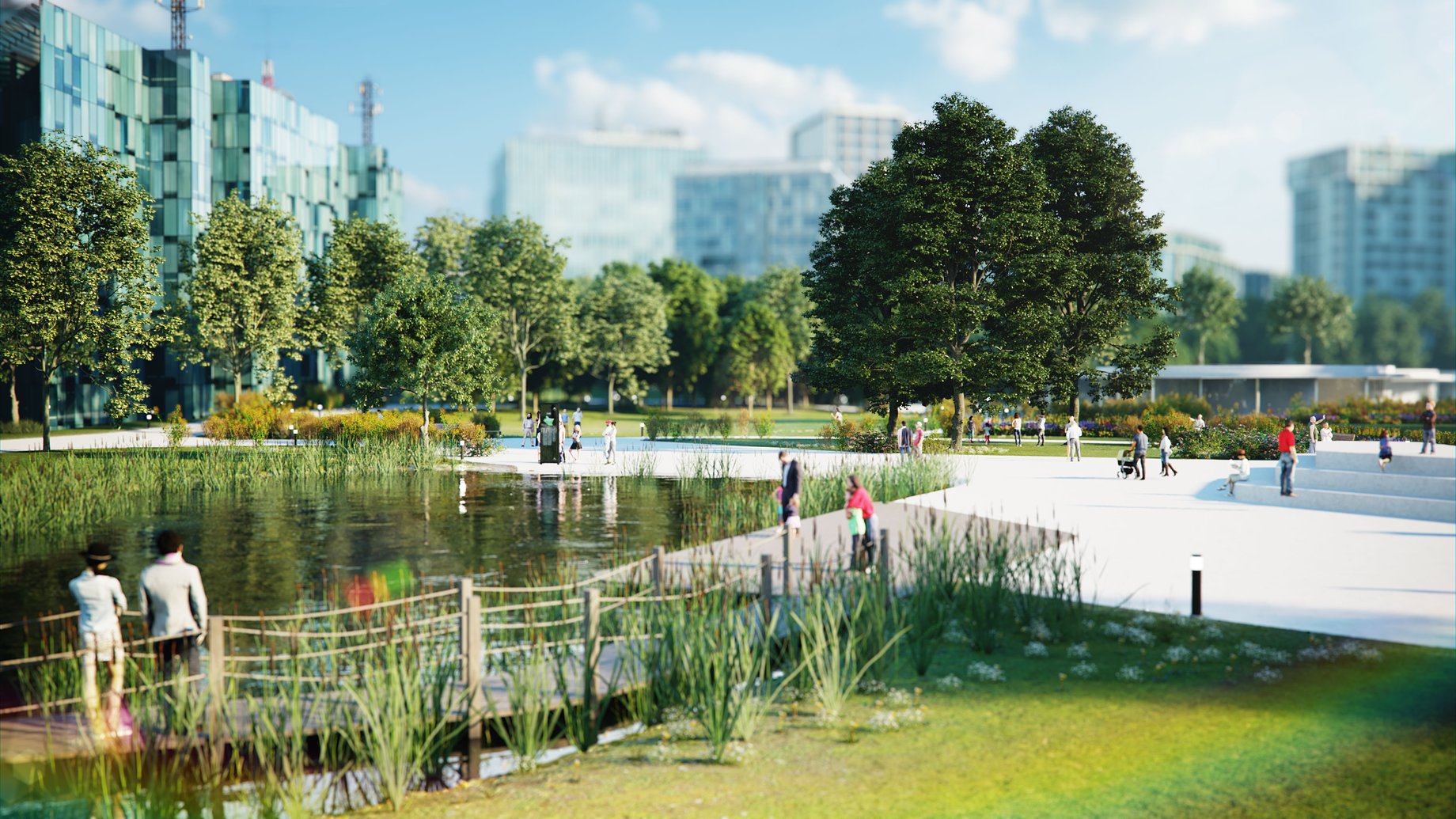Listen to the article

Yehan Wu, Agnès Patuano, and their team researched how different configurations of small green spaces impact their ability to reduce temperatures, using the ENVI-met micro-climate simulation tool. The research focuses on the cooling effects in four distinct European neighborhood typologies, analyzing three aspects: cooling inside green spaces, cooling outside them, and the Park Cool Island (PCI) effect, which refers to the temperature difference between green spaces and their surroundings.
Urban design strategies: Key findings from the study
- Cooling within green spaces: The study found that the design of the green space itself plays a crucial role. Larger green spaces with a square shape cool more effectively, with mean temperatures inside the green space varying by as much as 4°C depending on the green space design. Small scattered patches offer the least cooling inside the space itself, while larger, grouped spaces provide a more comfortable thermal environment.
- Cooling beyond the green space: Effective urban design not only cools the green spaces but also extends cooling to the surrounding neighborhood. The study found that grouping small green areas near wide streets reduced temperatures in the neighborhood by up to 1.3°C. Scattered small patches, especially near narrow streets, were the least effective.
- PCI effect and urban morphology: The PCI effect, which measures how much cooler green spaces are compared to their surroundings, is influenced by both the shape and size of the green space. Larger, squared areas create a stronger PCI effect, but the layout of the neighborhood — such as street orientation and width — also impacts cooling. For instance, in neighborhoods with narrow, radial streets, green spaces aligned with prevailing wind directions cooled more effectively.
 Image credit: Yehan Wu, Agnès Patuano & team
Image credit: Yehan Wu, Agnès Patuano & team
Practical implications of optimizing green space design for urban planners
The study offers practical guidelines for urban planners and designers, emphasizing that the design of small green spaces should not be an afterthought. Grouping small green spaces near wide streets, prioritizing larger and square-shaped patches, and aligning spaces with wind flow are among the most effective strategies for cooling cities.
Small green spaces can be powerful tools for reducing urban heat, but their design needs to be optimized. As cities continue to face rising temperatures, these design insights will be critical in making urban environments more comfortable and liveable, particularly for neighborhoods that cannot accommodate large parks.
By understanding the spatial nuances of green space design, urban planners can create greener, cooler cities — making even small green areas highly effective at cooling their surroundings.
Smart urban design for more liveable cities
This study underscores the importance of thoughtful green urban design in mitigating urban heat. While larger parks may not always be possible, small green spaces can still offer substantial cooling benefits when placed and designed effectively. These insights provide urban planners and designers with actionable guidelines to create more resilient, heat-resistant neighborhoods.
ENVI-met from One Click LCA, which simulates real-world urban microclimates, was crucial in this study, offering valuable insights into how different green space designs impact cooling. For urban designers, ENVI-met can help optimize layouts and ensure cooling solutions are effective, making a tangible difference in everyday thermal comfort.
Carbon Experts Newsletter
Industry news & insights — straight to your inbox
Want to learn more?
Roberta Belanova • Dec 04 2024
Asha Ramachandran • May 02 2025
Asha Ramachandran • Mar 10 2025
Asha Ramachandran • Oct 31 2025
